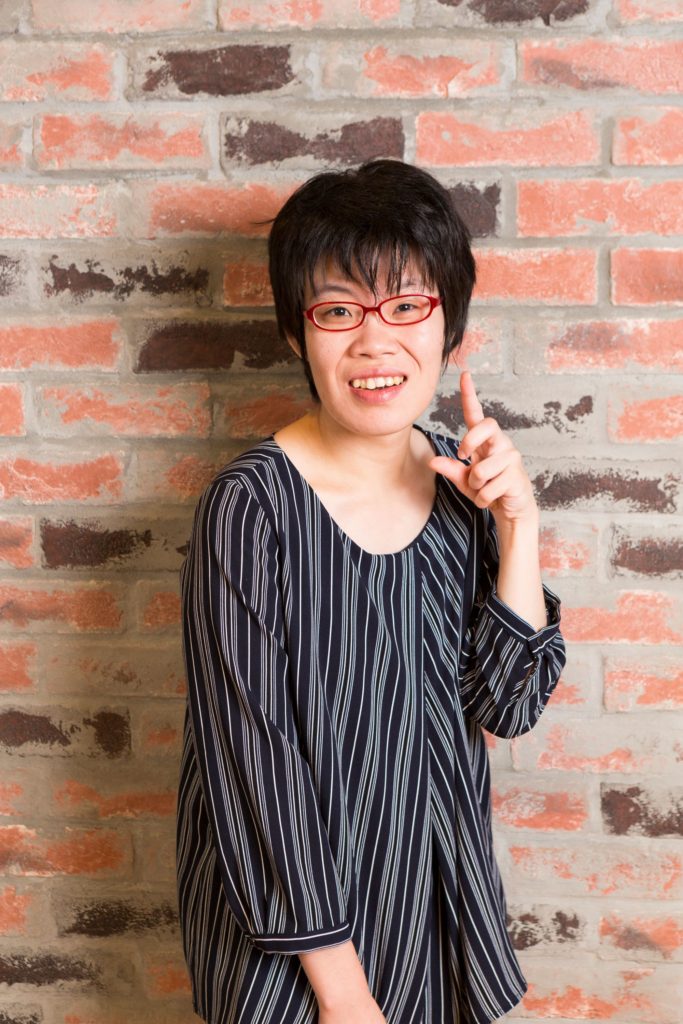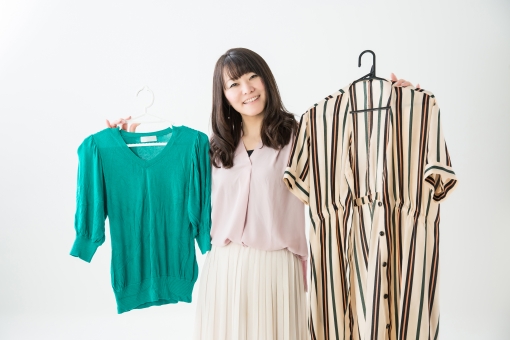【Background】
Fashion is one of the indispensable elements which enrich our lives. We can express ourselves and broaden our views by dressing the way we like. Of course, this is also true for people who have disabilities of various kinds. The demand for fashion in Japan has been declining along with the decrease in population. According to the Subprime Apparel Research Report the scale of the market shrank by 40 percent over the 20 years from 1990 to 2010. Also, the industry has gone through a significant paradigm shift in the way products are bought, which includes a transition from retail stores to internet shopping. Given this situation, we thought it valuable to investigate fashion for disabled people, who are too often overlooked by market researchers and brands
【Participants】
Readers of our magazine nationwid
【Method】
Internet Survey
【Period】
October 2019
Total number of survey responses: 197
【Who participated?】
50 % of respondents were in their 20s and 30s.
80 % were women.
56.8 % had a physical disability
12.6 % had a developmental disability
【Research Summary】
• In response to the question on the amount of money spent on fashion, ¥1000 to ¥3000 account for the majority. On the other hand, the question on the desirable amount of money spent on fashion got ¥9000 to ¥20,000 as the most answered amount. Therefore, if issues made clear in this questionnaire are solved, there is potential for a significant increase in the amount spent.
• 60 % make purchases in large stores. The percentage of people who have utilized peer-to-peer mobile “flea market” applications is 46.2 %, and the most popular one is Mercari.
• Fashion information is still available in magazines and other printed material and on TV, in addition to social media.
【Detail】
Q1)How much do you spend on fashion on a monthly basis?
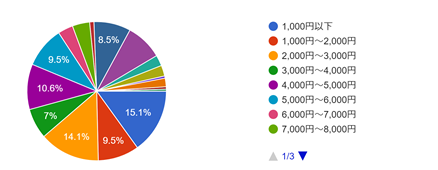
Q2) How much would you like to spend on fashion?
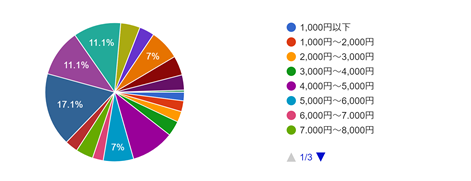
• Less than 1000 yen
• 1000-2000
• 2000-3000
• 3000-4000
• 4000-5000
• 5000-6000
• 6000-7000
• 7000-8000
Q3) Which items do you spend the most amount on?
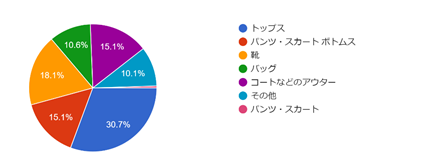
• Tops
• Pants/ skirts (bottoms)
• Shoes
• Bags
• Coats/jackets
• Others
• Pants/ skirts
Other Answers
- Clothes that people who have pantalgia (pain in their whole body) can wear all day
- Accessories
- Sportswear
Q4) What is your favorite brand?
- ZARA
- UNIQLO
- Issei Miyake
- TENBO
- Samansa Mos2
- Honeys
Q5)Do you know any brand for disability fashion?
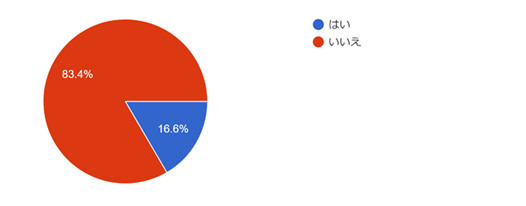
• Yes
• No
Q5-2) For those who answered Yes, which brand? What kind of characteristics do they have? How did you get to know about them?
・Nakanokou: They make separable Kimono
・TEMBO: They design fashion for people who have various disabilities. For example, magnetic buttons
I found the information about this brand’s store in Ikebukuro for a limited period when I visited an Earth Day event.
・Piroracing
・United Arrows
・EspritRobe
Q6) What quality in clothing do you prioritize in relation to your disability?。(Multiple answers allowed)
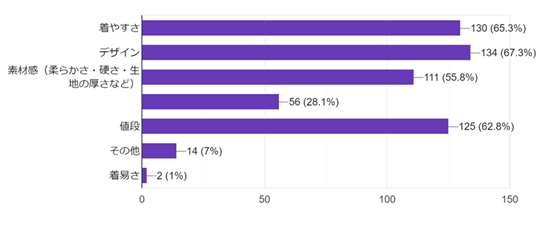
• Easy to wear
• Design
• Materials (Softness, hardness, thickness of cloth)
• Price
• Others
Q6-2)For those who chose “easy to wear”, what is the key factor you consider when purchasing clothes?
・I choose clothes which don’t have buttons or zippers.
・I fall easily when wearing pants so I usually choose skirts.
・Clothes that keep their shape and avoid stiff shoulders
・It would be best if the waist was elasticated
・I consider whether I can put on and take off the clothes by myself and whether seams in the clothes come in contact with my bones.
・Clothes that are easy to take off in the restroom
Q7)Are there types of clothes that you would like to wear if they were easier to put on?
【Tops】
・Tops with buttons on the chest, very smooth or slick materials
・Off-the-shoulder tops
・Dresses with a zipper on the back
・I’d like to wear clothes with defined chest lines. Due to pain from Fibromyalgia, I have not worn bras for years.
・Eyeline T-shirts, Tops with loose sleeves, and clothes that show your collarbone.
・Blouses, T-shirts, tops with buttons on the front
・Light-colored tops (The tires on my wheelchair rub and leave marks so I can’t choose light colors)
【Bottoms】
・I’d like to wear jeans. I have not worn jeans since I started using a wheelchair because it is hard to put them on and take them off. I used to work at a jeans shop so I’m a little sad.
・I’d like to wear skirts but they get stuck in the wheelchair. Also, my legs are deformed, so I do not feel comfortable showing them in public.
・It is both physically and emotionally hard to wear stockings and tights. I avoid skirts because shoes with heels put stress on my hip joint.
・Materials that do not stretch
【Others】
・I have equines, so I cannot choose pretty shoes.
・I can’t afford expensive clothes.
・I cannot tie a belt.
・I cannot use backpacks anymore because an ICD planted on the left chest is pressed when I use one.
Q8) Where do you usually buy clothes?
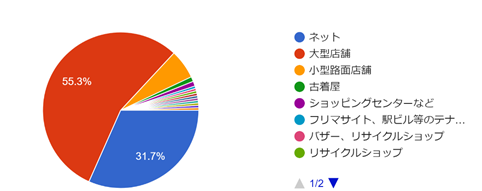
• Online
• Large stores
• Shops
• Second-hand stores
• Shopping malls
• Flea market applications
• Bazaar and recycle shops
• Recycle shops
Q9)Tell us the names of accessible stores and shops that you recommend to other people. Also, tell us how they are accessible.
・There is an accessible fitting room at Marui in Yurakucho. It is spacy and you can try clothes on while lying down.
・I recommend the Uniqlo store in Lazona Kawasaki. There are no steps and the aisles are wide.
・I recommend Momo Terrace. It has Uniqlo and GU, and has large elevators. Its parking lot is so big it usually does not fill up. I often see mothers with strollers there.
・I have not found any.
・In AEON Mall, there is a large corner that sells pretty clothes that are affordable and soft. Since I moved to Tokyo, it is sad that I have not found AEON Malls here. When helpers are available to support disabled customers (with getting around the store), I had them help me to try things on. However, there are actually few helpers and many of them are elderly, so this support system for transportation is not very convenient for me. When I go shopping, I buy clothes and bring them home first to try them on and check their materials. If you did not like them and take them back to the store, you can get reimbursement there. Make sure you keep the receipt and do not cut the tag. AEON has affordable clothes that are nice and pretty, so I recommend shopping there for people who have chronic pain and wheelchair users.
Q10)Have you ever used flea market applications?
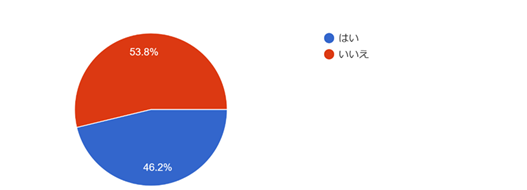
• Yes
• No
Q11) which application did you use?
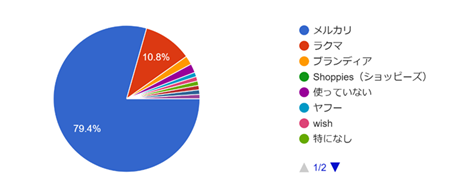
• Mercari
• Rakuma
• Brandear
• Shoppies
• No use
• Yahoo
• Wish
• No use
Q12)What are the pros and cons of flea market applications?
【Pros】
・Affordability
・High end brands are sold at an affordable price.
・The majority of people there fold their clothes nicely for you.
・You can take your time.
・You can get items delivered.
・It is convenient when you cannot go to stores.
【Cons】
・After I made a payment, I could not contact the seller. I had the site reimburse my purchase.
・It is not convenient for me because you cannot tell the condition of the item before you see it. I need to know the condition in advance for a medical reason.
・Sellers/buyers assume that I am an able-bodied person and it is often difficult for me.
・There was a time where after I finished boxing the item, I could not contact the buyer.
・It makes me tired when buyers haggle over the price of my items when I wrote in the description, “No discount.”
・My buyer told me that they were going to either give the item back or discard it even though I had posted a picture of it. I decided to have him throw it away and their payment got cancelled. I bet they were going to get it for free from the beginning.
Q13) How do you collect information about fashion? Choose one or more items from below.(Multiple answers allowed)
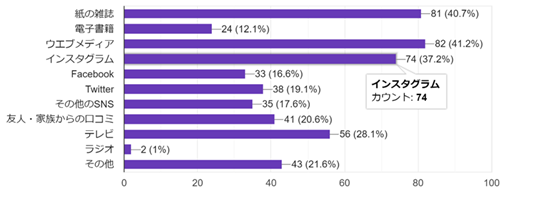
• Paper magazine
• Electronic books
• Web media
• Instagram
• Facebook
• Twitter
• Other social media
• Word of mouth from friends and family
• TV
• Radio
• Others
Q14)Have you ever used shops where they remake your clothes, or have you got your clothes tailor made?
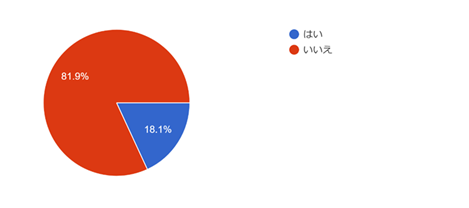
• Yes
• No
Q15) For those who answered Yes, exactly which shop and what kind of service have you used?
・Magic Sewing Machine (I got the end of my coat cut short, the buttons of my suit replaced with magnets, inserted reinforcement to make it easier to wear the sleeves, and replaced the waist of the skirt with elastic.
・Big Mama: I got the shoulders and sleeves of my outwear adjusted, my jeans adjusted so their length was shorter, and buttons replaced with snap buttons.
・I ordered a raincoat for wheelchair users.
・I got the length of my pants adjusted at Marui
・At Freegait, I got my shoes tailor made.
Q16) What item have you got tailor/semi-tailor made?
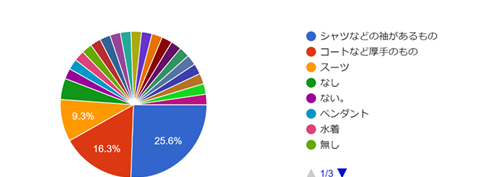
• Clothes with sleeves such as shirts
• Thick clothes such as coats
• Suits
• No item
• No item
• Pendant
• Swimwear
• No item
Q17)How much was it?
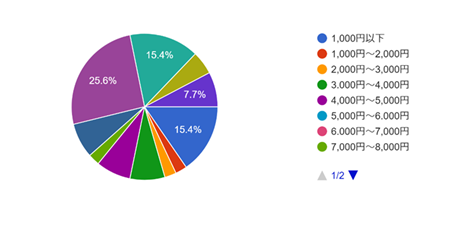
• Less than 1000 yen
• 1000-2000 yen
• 2000-3000 yen
• 3000-4000 yen
• 4000-5000 yen
• 5000-6000 yen
• 6000-7000 yen
• 7000-8000 yen
Q18)What are the challenges in purchasing fashion items?
・I have so many requirements that I cannot find items within my budget range. I need assistance when changing so I cannot try clothes on.
・Communication with salespeople in the store is the biggest challenge. I find it hard to get support through writing such as asking about sizes.
・I cannot reach clothes I am interested in.
・I cannot tell what an item will look like when sitting down.
・I cannot find pretty shoes.
Q19)How do you think these problems can be solved?
・I wish fitting rooms had more space.
・It is nice if they have tablets. They would probably manage their inventory with them.
・I would like them to lower the shelves.
・By placing sitting mannequins.
・Shoes brands for people who have walking disabilities would be good.
Q20)What does fashion mean to you?。
・It shows respect and personality. I want to take it seriously because I respect myself and others.
・A way of self-expression both at work and in my free time
・It is challenging for me. Now that I am in a wheelchair, I get self-conscious about other people looking at me. Fashion is something that allows me to wear pretty items and make it comfortable to go out.
・It shows whether you have confidence. I used to enjoy fashion and makeup, but since my condition got worse, I do not go out much. I repeat eating, vomiting, and drinking a lot. It is nothing but a burden to go and eat out with my husband. I feel like I do not deserve to enjoy fashion.
・It is something that I need to give up. Sometimes I need to compromise, but I can encounter a new me when I’m creative about it.
【Analysis by the Co-Co Life researcher Yuki Enomoto】
As the 2020 Olympics and Paralympics approaches, more attention is being paid to “universal design”. Also, more awareness has been raised regarding Japan’s growing disabled population which is caused by its aging society and the UN 2030 SDGs. However, through this research, we realized that we had a long way to go in terms of universal design in fashion.
The survey response shows that many of our supporters, regardless of whether they are disabled or not, enjoy fashion as a means of self-expression and something that enables them to be who they want. At the same time, some noted that they needed to give up on some clothes they like because of their disabilities, or that they cannot afford to buy new clothes.
Issues like “challenges in purchasing clothes,” “the size of fitting rooms” and “the absence of clothes that fit them” were raised. As solutions for these, “using wheelchair-accessible fitting rooms” and “shopping at places with size diversity and using adjustment” were brought up.
In the item “What quality of clothes do you prioritize in relation to your disability?”, how easy it is to put on/wear the clothes came top of the list and design ranked second.
The question “Do you have the kind of clothes that you want to wear but are hard to wear?” showed us that everyone was thinking of trying new types of clothes.
The fashion industry puts emphasis on both trend and function. There may be difficulties in terms of how we make the best of universal design and make it into products. In this research, it came to be clear that many people who have disabilities want to enjoy fashion. I hope that this research will become a catalyst for broadening their perspectives, and that more of them will wear what they want and express themselves.
